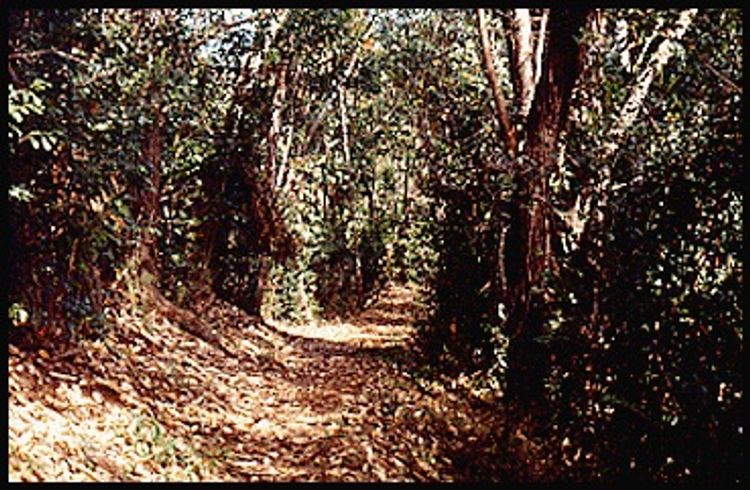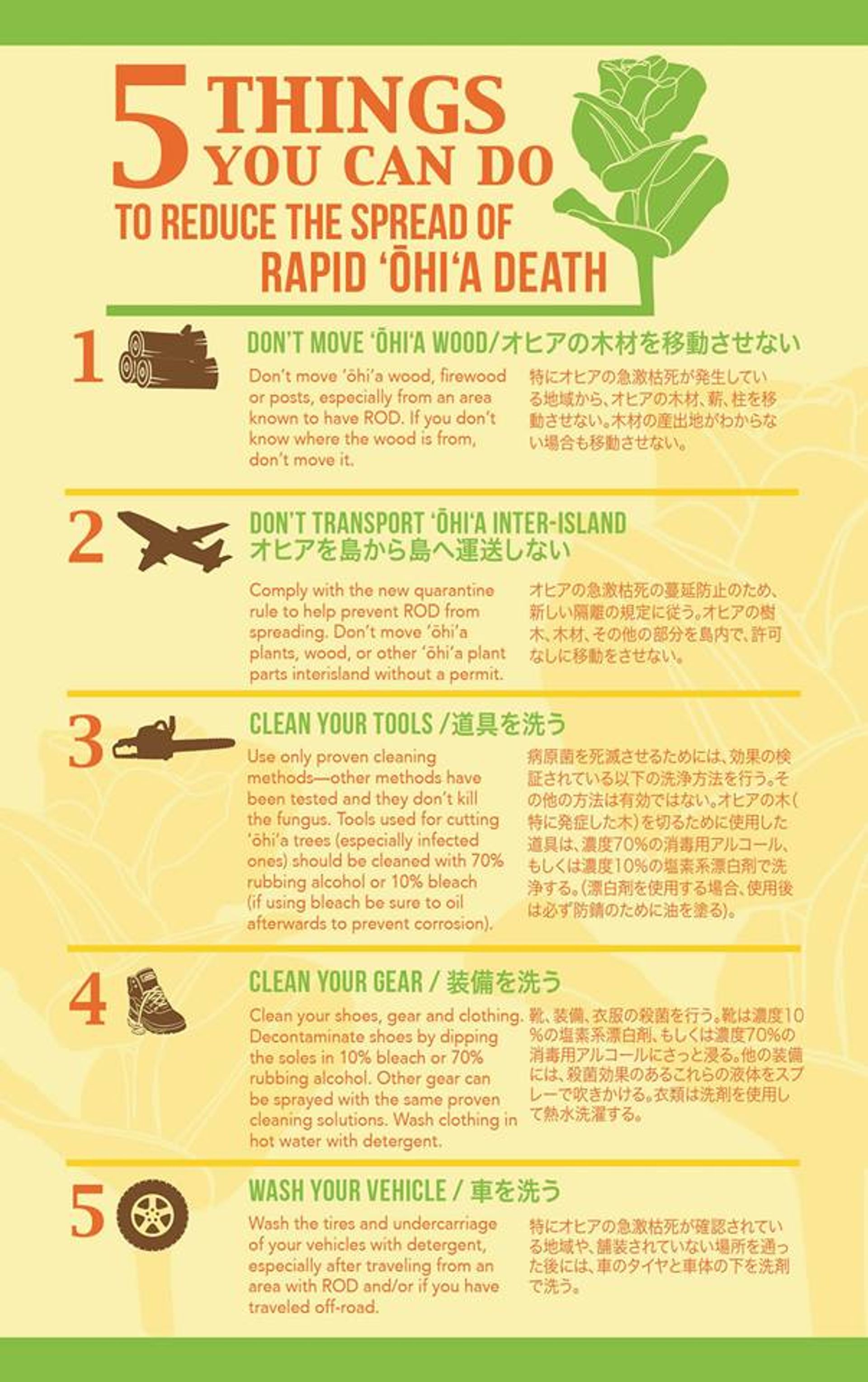Check the boulders on the upper switchbacks for the native herb `ala`ala wai nui. It grows in low mats, which cling to moss covered rock and trees in moist, protected areas. The herb has small, succulent leaves and slender spikes bearing flowers and fruit. Early Hawaiians used the plant to make a gray-green dye and various medicines.
At the junction with the west side trail is a small grove of hala trees. They have distinctive prop roots that help support the heavy clusters of leaves and fruit on the ends of the branches. Early Hawaiians braided the long, pointed leaves, called lau hala, into baskets, fans, floor mats, and sails.
After the junction look for ki (ti) plants. They have shiny leaves, 1-2 feet long, which are arranged spirally in a cluster at the tip of a slender stem. Early Polynesian voyagers introduced ti to Hawai`i. They used the leaves for house thatch, skirts, sandals, and raincoats. Food to be cooked in an imu (underground oven) was first wrapped in ti leaves. A popular sport with the commoners was ho`he`e ki or ti-leaf sledding. The sap from ti plants stained canoes and surfboards.
Before heading down, look for graceful koa`e kea or white-tailed tropicbirds, gliding overhead. They have two central tail feathers elongated into streamers. Tropicbirds feed by diving into the ocean for fish and squid. They nest in burrows or rock crevices along cliff faces.

